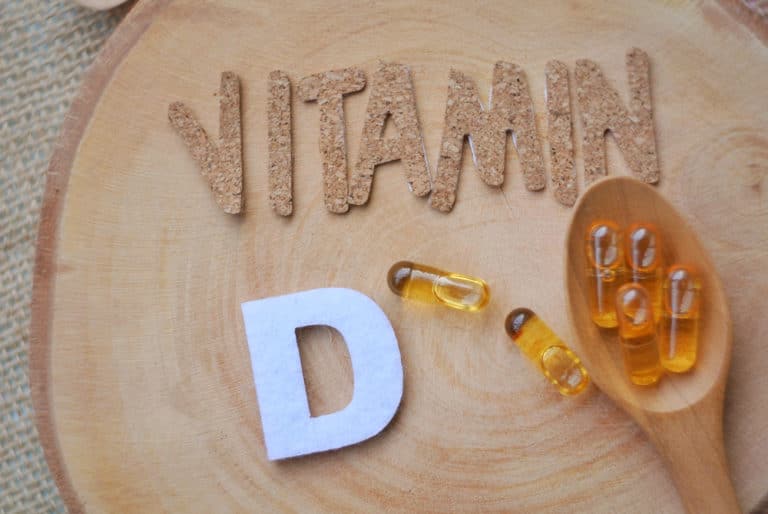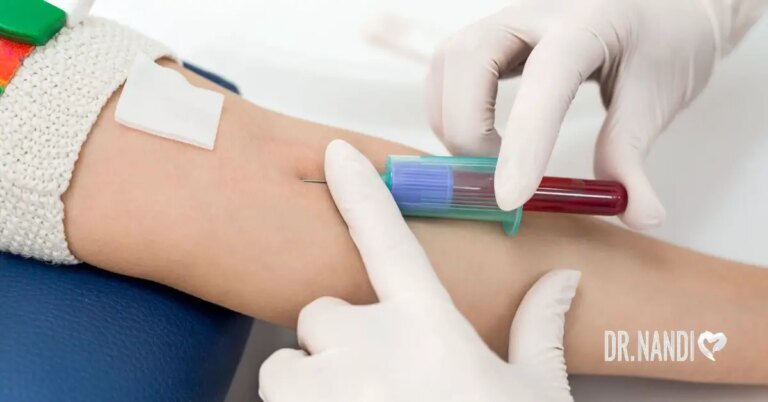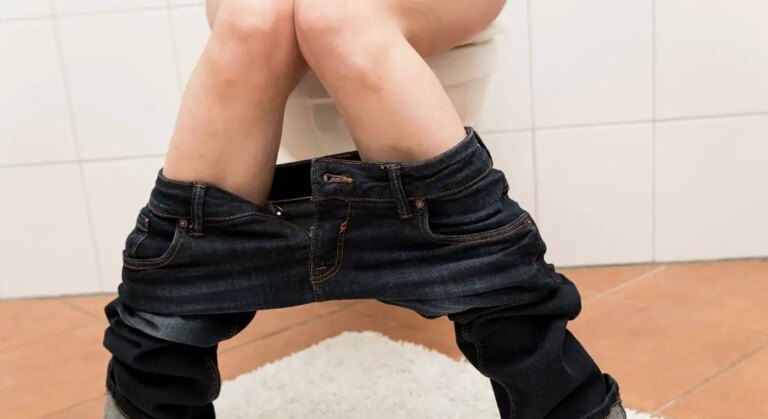If you notice more hair fall than usual, you might start panicking and worry that you’re losing your crowning glory.
According to the American Academy of Dermatology, losing 50 to 100 strands of hair per day is typical. Women can lose hair after childbirth and during menopause. Every man will also lose some hair by the time they reach adulthood.
Baldness develops to varying degrees in elderly males and females, which is mostly determined by genetic factors. In fact, it is estimated that 50 million men and 30 million women in the United States suffer from androgenetic alopecia. But if you’re losing hair more than you should, it could be a sign of a thyroid problem.
More than 12% of Americans will develop a thyroid issue during their lifetime, according to the American Thyroid Association. 60% of people with thyroid disease are unaware of their condition. Furthermore, women are up to eight times more likely to suffer from this condition.
Though a thyroid problem might be difficult to spot, there are a few obvious indications to look out for, one of which is hair loss.
What Does Thyroid Have to Do With the Hair?
Your hair follicles go through a normal cycle of growth and rest. Most of your hair is growing at any given time, with only a small fraction of it resting. When changes in the body disrupt that cycle, too much hair rests and not enough develops, resulting in excessive hair loss, thinning hair, or balding.
According to a review published in Molecular Biology of the Cell, thyroid diseases, characterized by altered T3 and T4 hormones, can induce hair loss, especially in untreated or extreme situations. The review also discovered that hair loss, as well as hair breaking or thinning, occurs in both the underactive thyroid gland (hypothyroidism) and the overactive thyroid gland (hyperthyroidism). [1]
Thyroid disorders are caused by either an inactive or underactive thyroid gland (hypothyroidism) or an overactive thyroid gland (hyperthyroidism). In some cases of hypothyroidism, your pituitary gland fails to produce thyroid stimulating hormone (TSH), which initiates thyroid hormone release. Thyroid disorders influence the vital hormones T3 and T4, which govern hundreds of body processes, including regeneration. [1, 2]
If your thyroid function is compromised, your hair may not grow as quickly as it should. As existing hairs reach the end of their development cycle, they aren’t adequately replaced by new ones.
In other words, because hair growth is dependent on the thyroid gland’s appropriate functioning, irregular levels of thyroid hormone released by this gland can result in hair alterations. Furthermore, when this hormone is deficient, hair loss can occur anywhere on the body, not just on the scalp.

Ways Your Hair Could Show Signs of a Thyroid Problem
Hair loss caused by a thyroid problem appears differently. Instead of a balding crown or receding hairline, you’ll typically notice diffuse thinning across your entire scalp, which might even affect the texture of your hair.
Here are some hair-tale-tell signs of a possible thyroid problem.
- Dry, Brittle Hair
According to Joshua D. Safer, MD, hypothyroidism can cause hair to be “dry, coarse, brittle, and slow growing.” It may coincide with thickened, brittle, and slow-growing nails as well. [3]
- Fine Hair
Hyperthyroidism can result in hair that feels exceedingly fine and delicate. It is not a permanent issue as long as you receive the necessary treatment. Hair changes are frequently relatively transitory and will disappear as treatment progresses and thyroid hormone levels stabilize. [4]
- Thinning Hair
Thyroid issues can cause hair to appear “uniformly sparse,” according to the British Thyroid Foundation. An autoimmune thyroid illness like Hashimoto’s thyroiditis can cause thinning hair, and the sooner a person addresses changes in or loss of hair, the more probable it is that irreversible damages can be avoided. [5, 6]
- Excess Hair Growth
Excess hair growth may appear to be a good thing, but it rarely occurs on the head when caused by thyroid issues. This hypertrichosis or hirsutism commonly appears on the forehead, including the temples and between the eyes, as well as the top region of the cheeks. If your brows seem suddenly bushy or if you notice hair growing on your face, see your doctor.
- Itchy, Dry Scalp and Dandruff
Thyroid disorders can induce changes in skin cells, and when that skin is on the scalp, the effects can be seen in your hair. Dry, flaky skin can cause an itchy scalp and persistent dandruff.
According to dermatologist Ilyse Lefkowicz, MD, dandruff is limited to the scalp, whereas dry skin from hypothyroidism can be anywhere on the body. Hypothyroidism may also be related to other symptoms that are unrelated to dandruff. [7]
Pharmacological and Natural Treatment Options
Mild thyroid disorders do not usually result in hair thinning. Consulting your doctor to manage your disease with medication may keep your hair thick or regenerate growth, though it might take some time to develop and grow.
Medications may include:
- levothyroxine for hypothyroidism
- propylthiouracil and methimazole for hyperthyroidism
- beta blockers for hyperthyroidism [2]
Unfortunately, anti-thyroid medications like propylthiouracil, carbimazole, and methimazole can disrupt a healthy hair cycle even more. Once you start taking the meds, it might even be difficult to determine if the shortening of the hair growth cycle is due to the underlying thyroid problem or the medication. It is critical to work with your doctor and request a medication that they can adjust to your needs without worsening hair loss. [5]
Along with medication, you can attempt many natural treatments to slow hair loss or regenerate hair growth:
- Boost Your Iron Intake
Researchers have suggested that hair loss treatment can be more easily treated if iron deficiency is addressed. This is because hair follicles can be sensitive and may not grow new cells when iron levels are low. [8]
Consider having your iron levels tested and taking any necessary supplements to boost your iron intake as directed by your doctor.
- Watch Your Stress Levels
Cortisol overflow results from excessive stress. Our hormones are delicately balanced, and persistent stress may tip the scales. Stress hormones play a significant role in hair loss and hormonal imbalances.
In addition to therapy, daily meditation, writing, yoga, or other stress-relieving activities might help reduce cortisol levels.
- Treat Nutritional Deficiencies
Even in the absence of a thyroid problem, nutritional inadequacies can contribute to hair loss. Researchers suggest that vitamins B-7, B complex, zinc, copper, vitamins C, E, and A, and coenzyme Q10 may help in hair retention and hair loss.
- Eat Well
A diet rich in whole foods is essential for good health. If you consume calcium-rich meals while being treated for hypothyroidism, time them at least four hours after your levothyroxine for optimal absorption.
Sugars, red meat, and fried foods, as well as caffeine and alcohol, can all trigger an inflammatory reaction. Inflammation can exacerbate thyroid symptoms such as hair loss. Make sure to add anti-inflammatory food and herbs to your diet. You should also watch your iodine intake. [2]

Supporting Your Thyroid Health
Your endocrine system is complex and linked to a wide range of health conditions. Consult an endocrinologist if you suffer any suspected signs of thyroid abnormalities other than hair loss, such as the inability to lose weight, intense exhaustion, or an enlarged thyroid gland.
Thyroid disorders rarely cause hair loss until they are severe. Moreover, thyroid dysfunction affects many body processes other than hair growth, so consult your doctor as hair loss may be a symptom of some underlying medical condition.
Keep your thyroid healthy with science-backed Thyroid Support supplements you can find at the Health Hero Pharmacy.
Subscribe to our newsletter for more research-based articles and new discoveries delivered right to your inbox.
As someone who deeply values my health, I’ve come to realize the profound impact of hormone balance on overall well-being. Achieving and maintaining optimal hormone levels is crucial for vitality, mood stability, and overall health. It’s time to prioritize our hormone health and unlock our full potential.
My Personal RX
1. Embrace a hormone-balancing diet by incorporating nutrient-dense foods like leafy greens, cruciferous vegetables, lean proteins, and healthy fats. Discover ways to nourish your body and support hormone health with my Superfoods Cookbook
2. Practice stress management techniques such as meditation, yoga, or spending time in nature. Chronic stress can disrupt hormone balance, so let’s prioritize self-care and find healthy ways to unwind.
3. Consider incorporating Thyroid Support supplements into your routine. This comprehensive formulation combines powerful nutrients and botanicals to promote thyroid health and support hormonal balance. Ignite your hormone vitality.
4. Prioritize regular exercise to support overall hormone health. Engage in activities you enjoy, whether it’s dancing, strength training, or practicing yoga. Movement boosts endorphins and supports hormonal balance. Find out how to incorporate more exercise into your daily routine and live a healthier lifestyle with my free 50-page step-by-step Protocol Guide.
5. Listen to your body’s signals and seek guidance from healthcare professionals specialized in hormone health. Regular check-ups and open communication can help identify and address any imbalances.

Sources:
- Thyroid hormone signaling controls hair follicle stem cell function – PMC
- Your Thyroid and Hair Loss: Symptoms, Home Remedies, and More
- Thyroid hormone action on skin – PMC
- Hair Loss & Thyroid: Symptoms & Treatment | Everyday Health
- Hair loss and thyroid disorders
- Hashimoto’s Thyroiditis and Hair Loss: Everything You Need To Know
- Symptom Checker – Difference Between Hypothyroidism and Dandruff
- The diagnosis and treatment of iron deficiency and its potential relationship to hair loss – Journal of the American Academy of Dermatology




















